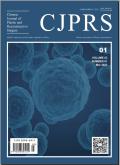Revolutionizing diabetic wound healing: The power of microneedles
Chinese Journal of Plastic and Reconstructive Surgery
Pub Date : 2023-12-01
DOI:10.1016/j.cjprs.2023.12.004
引用次数: 0
Abstract
Diabetic wounds significantly affect patient quality of life. Microneedles are a promising treatment to accelerate wound healing owing to their high drug-loading capacity and efficient drug delivery; however, few studies to date have comprehensively reviewed microneedles for diabetic wound healing. This up-to-date review summarizes the research progress in microneedles for diabetic wound healing, including manufacturing materials and techniques, structures, designs, release mechanisms, delivery substances, and their specific effects. This study showed that most microneedles designed for diabetic wounds are made of synthetic polymers and/or natural materials using polydimethylsiloxane micromolding. The geometric structure and design directly influence penetration ability and drug delivery capacity. Microneedles can deliver antibiotics, hypoglycemic agents, traditional Chinese medicines, metal ions, growth factors, exosomes, stem cells, and microorganisms, thus promoting diabetic wound healing through diverse mechanisms, such as antibacterial, anti-inflammatory, antioxidant, hypoglycemic, and angiogenic activities, at different stages of the healing process. In conclusion, microneedles are promising drug delivery systems for the treatment of diabetic wounds.
糖尿病伤口愈合的革命:微针的力量
糖尿病伤口对患者的生活质量有显著影响。微针因其高载药能力和高效给药而成为一种很有前景的加速伤口愈合的治疗方法;然而,迄今为止,很少有研究全面回顾了微针在糖尿病伤口愈合中的应用。本文综述了用于糖尿病创面愈合的微针的最新研究进展,包括制备材料和技术、结构、设计、释放机制、递送物质及其特异性作用。这项研究表明,大多数设计用于糖尿病伤口的微针是由合成聚合物和/或天然材料使用聚二甲基硅氧烷微成型制成的。其几何结构和设计直接影响渗透能力和给药能力。微针可以输送抗生素、降糖药、中药、金属离子、生长因子、外泌体、干细胞、微生物等,从而在愈合过程的不同阶段通过抗菌、抗炎、抗氧化、降血糖、血管生成等多种机制促进糖尿病创面愈合。总之,微针是治疗糖尿病伤口的一种很有前途的给药系统。
本文章由计算机程序翻译,如有差异,请以英文原文为准。
求助全文
约1分钟内获得全文
求助全文
来源期刊

Chinese Journal of Plastic and Reconstructive Surgery
Surgery, Otorhinolaryngology and Facial Plastic Surgery, Pathology and Medical Technology, Transplantation
CiteScore
0.40
自引率
0.00%
发文量
115
审稿时长
55 days
 求助内容:
求助内容: 应助结果提醒方式:
应助结果提醒方式:


